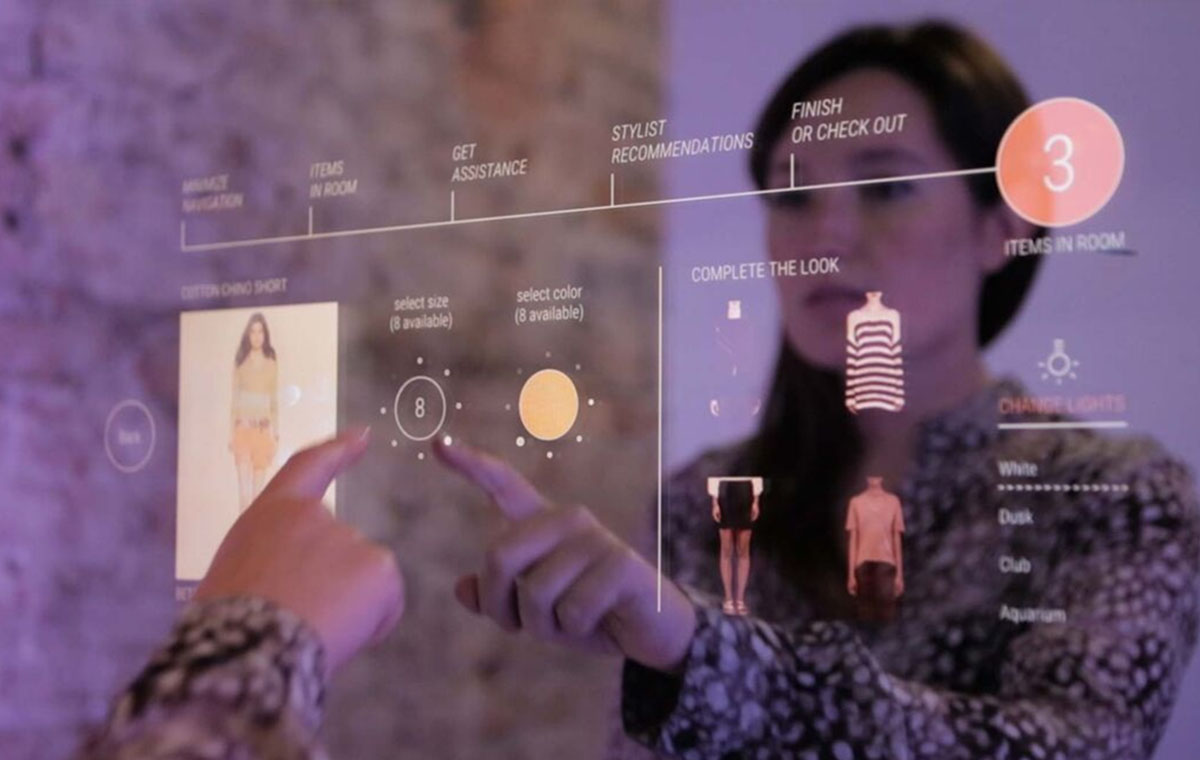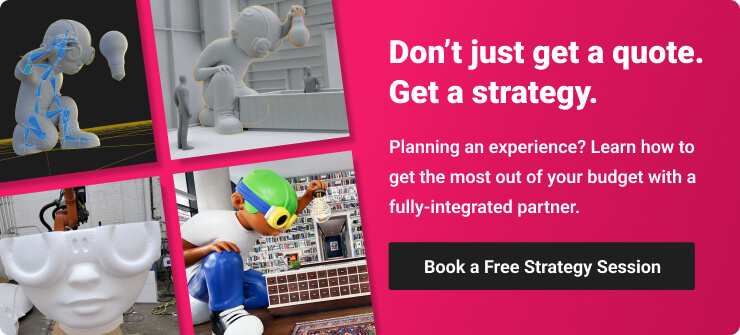Envision walking into a shop where it appears everything was chosen just for you, finding the sizes or styles you want is effortless, and checking out is quicker than ever. This isn't some scene from a futuristic movie; it's what shopping can look like today thanks to smart retail technology.
The retail experience is getting a major upgrade, improving the in-store environment for both customers and employees. Smart retail, with its top-notch tech, is all about creating an experience that's personalized, quick, and fun, totally changing the game from the old days of shopping trips.
Studies show that smart retail solutions could boost sales by as much as 30% while making customers happier and more likely to become repeat buyers. Thanks to everything from AI tools that know what you like before you do, to easy-peasy mobile payments, smart retail is creating new ways to elevate the customer’s experience and ease the burdens of store staff and management. Let's dive into the tech that's shaking things up and see how it's reshaping the world of retail.
What is Smart Retail?
Smart retail is fundamentally about optimizing the visitor's experience in a retail environment. It leverages advanced technologies to provide personalized, efficient, and engaging shopping journeys. Whether it's through AI integrations that allow for virtual try-ons without stepping into a dressing room, or customer tracking systems that reveal where shoppers gather and linger, smart retail is a far cry from traditional retail methods.
Consider the traditional clothing store. While quaint, it lacks the convenience and speed that today’s shoppers expect. Enter smart retail. With digital content and signage that can be updated regularly, stores stay fresh and relevant without invasive changes. This digital transformation also blurs the lines between online and in-person shopping, delivering instant gratification and personalized experiences that build customer loyalty.

How Technology is Shaping the Future of Shopping
The integration of technology in modern retail is not just a luxury—it's a necessity. Retailers must innovate to stay competitive and meet evolving customer expectations. They must give shoppers a reason to visit the store. What drives retail brands to innovate? It’s about enhancing customer experience, solving inefficiencies, and creating more engaging interactions.
Imagine entering a store where smart mirrors allow you to try on clothes virtually, RFID tags ensure accurate inventory management, and augmented reality apps let you visualize furniture in your home before purchasing. These technologies are shaping the future of shopping, making it more seamless and enjoyable.

The Core Technologies Driving Smart Retail
Smart Mirrors: The Future of Fitting Rooms
Smart mirrors in retail environments are interactive digital displays that look like regular mirrors but offer enhanced functionality. They typically use cameras, sensors, and augmented reality technology to provide shoppers with an improved try-on experience.
These mirrors can:
- Show how clothing items look on a customer without physically trying them on
- Suggest complementary items or accessories
- Allow customers to virtually change colors or styles
- Provide product information and availability
- Enable social media sharing
Smart mirrors aim to blend the convenience of online shopping with the tactile experience of in-store retail, potentially increasing customer engagement and sales.
Smart mirrors are a game-changer. Retail giants like Zara and Nordstrom use these to offer virtual try-ons. This technology reduces return rates and enhances the shopping experience by letting customers see how clothes fit without stepping into a dressing room.
RFID: Revolutionizing Inventory Management
RFID (Radio-Frequency Identification) technology is primarily employed for comprehensive inventory tracking and management, streamlining supply chain processes, and enhancing loss prevention measures. It also facilitates more efficient checkout processes and enables interactive product displays. These applications collectively contribute to a more digitally integrated and responsive retail ecosystem.
For consumers, RFID technology translates into a range of tangible benefits that enhance the shopping experience. Shoppers enjoy faster checkout experiences and improved product availability, thanks to more accurate inventory management. Additionally, RFID enables easier access to product information and supports better customer service, while also enhancing fitting room experiences through smart mirror integration.
Brands and retailers leverage RFID to gain significant operational advantages and improve customer satisfaction. The technology provides accurate real-time inventory visibility, reducing instances of stockouts and overstocking. It also improves supply chain efficiency and strengthens theft prevention measures. Perhaps most importantly, RFID enables enhanced data collection for analytics, allowing brands to make more informed decisions about product offerings and store layouts.
Augmented and Mixed Reality: A New Dimension to Shopping
Augmented Reality (AR) and Mixed Reality (MR) are transforming both in-person and online retail experiences by blending digital information with the physical world. In brick-and-mortar stores, AR-enabled smart mirrors and mobile apps allow customers to virtually try on clothing, accessories, or makeup without physical contact. For online shopping, AR apps enable customers to visualize products in their own space, such as placing virtual furniture in their homes or seeing how appliances fit in their kitchens.
These technologies benefit brands by reducing return rates, increasing customer engagement, and providing valuable data on customer preferences. They can also streamline inventory management by overlaying digital information in warehouses. For customers, AR and MR offer a more immersive and informative shopping experience, bridging the gap between online convenience and in-store tactile experiences. This leads to more confident purchasing decisions and increased satisfaction, whether shopping from home or in a physical store.
Sensors: Creating a Data-Driven Shopping Experience
Retail sensors are a cornerstone of smart retail, enhancing both in-store and online shopping experiences. These sensors track customer movement, monitor product interactions, and collect valuable data on shopping patterns. In physical stores, they can measure foot traffic, dwell times, and even customer emotions, while online, they help personalize the digital shopping journey.
For brands, retail sensors provide crucial insights into customer behavior, enabling data-driven decisions on store layouts, product placement, and staffing. Customers benefit from a more personalized shopping experience, with smart retail systems using sensor data to offer relevant product recommendations and create a more efficient shopping environment. This technology bridges the gap between physical and digital retail, creating a seamless smart retail ecosystem.
Voice-Assisted Shopping: The Rise of Smart Assistants
Voice-assisted shopping is rapidly becoming an integral part of smart retail, transforming how customers interact with both online and in-store environments. This technology allows shoppers to use voice commands to search for products, check prices, get product information, and even make purchases, all hands-free.
For retailers, voice assistance opens up new channels for customer engagement and sales, while also providing valuable data on customer preferences and shopping habits. Customers enjoy the convenience and speed of voice shopping, which is particularly beneficial for repeat purchases or when multitasking. In the smart retail environment, voice assistance is helping to create a more accessible and user-friendly shopping experience across all platforms.
Smart Shelves: Intelligent Inventory and Pricing
Smart shelves are a key component of the smart retail revolution, bringing digital intelligence to traditional store fixtures. These shelves use weight sensors, RFID technology, and digital displays to monitor inventory levels in real time, detect misplaced items, and dynamically update pricing and product information.
For retailers, smart shelves dramatically improve inventory management, reduce stockouts, and enable dynamic pricing strategies. They also provide valuable data on product performance and customer interactions. Customers benefit from always-accurate pricing, easy access to product information, and improved product availability. In the smart retail ecosystem, these shelves create a more responsive and efficient shopping environment, blending the best of digital and physical retail.
Digital Signage and LED Walls
Digital signage and LED walls are transforming visual merchandising in smart retail environments. These dynamic displays can showcase products, share brand stories, display real-time promotions, and even interact with customers' mobile devices. In both physical stores and window displays, they create immersive and attention-grabbing experiences.
For brands, these technologies offer unparalleled flexibility in messaging and the ability to quickly adapt to market trends or inventory changes. They can also integrate with other smart retail systems to display personalized content based on customer data. Shoppers benefit from more engaging and informative retail environments, with easy access to detailed product information, styling ideas, and current promotions. In the smart retail landscape, interactive multimedia bridges the gap between static physical displays and the dynamic nature of online shopping.

Predictions for the Next Big Trend in Smart Retail
What’s the next big trend in smart retail? The future of smart retail will be driven by the seamless integration of technologies and hyper-personalization. We're moving towards a retail environment where artificial intelligence and machine learning will work in concert with IoT devices, creating predictive and adaptive shopping environments.
Expect to see more widespread adoption of computer vision and advanced analytics, enabling retailers to anticipate customer needs in real time. The lines between physical and digital retail will continue to blur, with technologies like holographic displays and haptic feedback bringing online-style interactivity into brick-and-mortar stores.
Sustainability will also play a crucial role, with smart systems optimizing energy use and reducing waste. Perhaps most excitingly, we'll likely see the emergence of autonomous stores that can reconfigure themselves based on shopping patterns and trends, creating truly responsive retail spaces that evolve with consumer behavior.
Challenges and Considerations for Implementing Smart Retail
While the benefits of smart retail are clear, implementation comes with challenges. Retailers need to navigate the complexities of integrating new technologies with existing systems, managing data privacy concerns, and training staff to use new tools effectively. Having an experienced technology partner can make all the difference. Brands must also continually assess where they succeed and where they fall short, ensuring they offer an engaging and efficient customer experience.
Smart retail technology, including innovative tools like smart mirrors, RFID, augmented/mixed reality, sensors, voice shopping assistants, and intelligent shelves, is revolutionizing the retail industry by making shopping experiences far more tailored, efficient, and interactive today. These advancements are proving to be transformative, offering significant advantages such as optimized inventory handling, deeper customer insights, and increased efficiency for retailers, while consumers are treated to a shopping journey that is far more personalized, seamless, and delightful.
At Bridgewater Studio, we provide comprehensive strategy, design and production services for retail clients seeking everything from complete retail interior design to smart retail technology solutions. Our multifaceted team works closely with clients to understand their brand story and objectives, maximize their budget, and deliver exceptional experiences that keep customers walking through the door. Discover how we can help you bring your next retail project to life by booking a no-obligation strategy session today.


.png)
.png)
.png)







